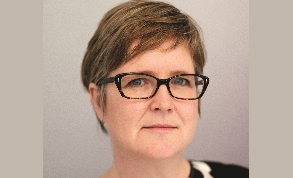Planning guidance continues restoration of 'normal financial discipline'
 The guidance sets out the priorities for the remaining six months of 2021/22 following the government announcement that it would provide an additional £5.4bn above the original mandate until March 2022.
The guidance sets out the priorities for the remaining six months of 2021/22 following the government announcement that it would provide an additional £5.4bn above the original mandate until March 2022.
Broadly speaking, the finance and contracting arrangements are a continuation of those in H1 (the first six months of 2021/22). Block contracts between commissioners and providers will remain, and system funding allocations are based on the H1 financial envelopes, adjusted for known pressures such as the pay awards and increased efficiency requirement. There will be some relief in providers, which were reportedly told to plan for 1.5% efficiencies. In H1 the general efficiency requirement was 0.28%, with an overall efficiency factor of 1.1%.
The cost of pay awards has been a concern for the NHS going into the second half of the year. The government awarded a 3% pay rise for Agenda for Change staff, consultants, career and staff grade doctors, and specialty and associate specialist (SAS) doctors who are not switching to a new contract. The pay uplift is backdated to 1 April.
The planning guidance said system funding envelopes will increase to cover the additional recurrent cost of the pay awards, as well as the non-recurrent costs of the backdated pay. The H2 uplift will also include provision for the cost of the new SAS contract, and for pay pressures usually covered by local authority or Health Education England income.
Updated national tariff payment system documents for 2021/22 said the cost uplift factor, which reflects expected changes in costs outside providers' control, has been increased to 3.1% as a result of the pay awards. In previous consultation documents the factor was set at 1.3%.
As in H1, there will be a further, targeted reductions in top-up funding based on systems’ distance from their 2021/22 financial improvement trajectory. Regional teams will provide further details.
Julian Kelly (pictured), NHS England and NHS Improvement chief financial officer, told yesterday’s board meeting in common of the two bodies that the H2 efficiency requirement was another step towards the restoration of 'normal financial discipline'.
He added: ‘We are still in the process of some of the spending review negotiations. That will be critical to setting the right capital budget for the NHS. It is really important we get that right so we can deliver the ambitions the government set out for elective care at the beginning of September.’
Mr Kelly said the H2 planning guidance allocated another £1bn to support elective recovery as the NHS seeks to maintain and increase services alongside addressing normal winter pressures.
He continued: ‘It means we can continue with the hospital discharge programme, which has been so critical to maintaining the flow through hospitals and maintain mental health services throughout the second half of the year.’
Elective recovery funding
Systems that achieve 89% of their 2019/20 activity (95% in H1) will be able to draw down from the Elective Recovery Fund (ERF), which has a total worth of up to £1bn. ERF is in addition to system envelope funding. Some of the ERF will be used centrally to cover the costs of independent sector activity above 2019/20 levels. The guidance said the threshold for accessing the ERF has been recalculated as it is now based on completed referral to treatment pathway activity rather than the total cost weighted activity, which was used in H1. It said the new 89% threshold was comparable with the 95% level employed in H1.
A second fund that can be accessed on top of system envelope funding, the Targeted Investment Fund, will support elective recovery in systems that, for example, can go further or that need additional financial support, the guidance said. It is worth £700m, including an additional £500m in capital funding, at least half of which must be spent on technology.
‘[The planning guidance] also sets out the details for how we are looking to spend £500m of capital and around £200m of revenue support that will enable us to look at how we can further increase our capacity to deal with the backlog of care in acute settings, and how we can invest in technology and transformation,’ Mr Kelly said. ‘Again, that will put the NHS in a better place to drive out sustainable financial savings and improvement in performance as we look ahead to 2022/23.’
Systems should work with regional teams to propose a shortlist of targeted investments that can have an impact on activity in the region in 2021/22 or in the future. Proposals should be submitted by 14 October.
The guidance added that clinical commissioning groups’ plans should include suitable mitigations of known risks. ‘Where CCGs consider it appropriate to support risks to expenditure that may not otherwise be mitigated, we advise to set aside a contingency of up to 0.25% of their H2 allocation,’ it said.
 NHS Providers welcomed the clarity in the planning guidance. Deputy chief executive Saffron Cordery (pictured) called for ‘rapid and tangible’ action to address workforce shortages so the NHS could ‘meet the ambitious targets to step up elective and cancer care, and manage the increasing demand on mental health services’.
NHS Providers welcomed the clarity in the planning guidance. Deputy chief executive Saffron Cordery (pictured) called for ‘rapid and tangible’ action to address workforce shortages so the NHS could ‘meet the ambitious targets to step up elective and cancer care, and manage the increasing demand on mental health services’.
She added: ‘Recent funding announcements have provided a much-needed boost. But we must be realistic about the scale of the challenges ahead and the risk that ambitions to meet pre-pandemic levels of activity could be thrown off course if pressures on the service become unsustainable over winter.’
Discharge to assess funding will continue until the end of the financial year, but without confirmation it will continue into the 2022/23, the service will be concerned, and it could impede recovery efforts, she said.
NHS Confederation chief executive Matt Taylor warned the health service faced ‘a perilous winter’ due to a high number of vacancies and tired staff.
At yesterday’s meeting, Mr Kelly also outlined the month four figures (see paragraph 34 in the link) for 2021/22. Year-to-date figures showed the NHS is broadly living within its means with an overall underspend of almost £365m. The forecast outturn shows an aggregate overspend of £58m.
‘We are living within the budget that was agreed for the first half of the year,' Mr Kelly told the board meeting. '[The budget] included £1bn for elective recovery, which has largely been drawn down and spent, and has been critical to delivering the levels of extra elective care, as trusts continue to live within the operational constraints and demand that arise from Covid.’
The HFMA has produced a summary of the H2 planning guidance, which can be found here
Related content
We are excited to bring you a fun packed Eastern Branch Conference in 2025 over three days.
This event is for those that will benefit from an overview of costing in the NHS or those new to costing and will cover why we cost and the processes.